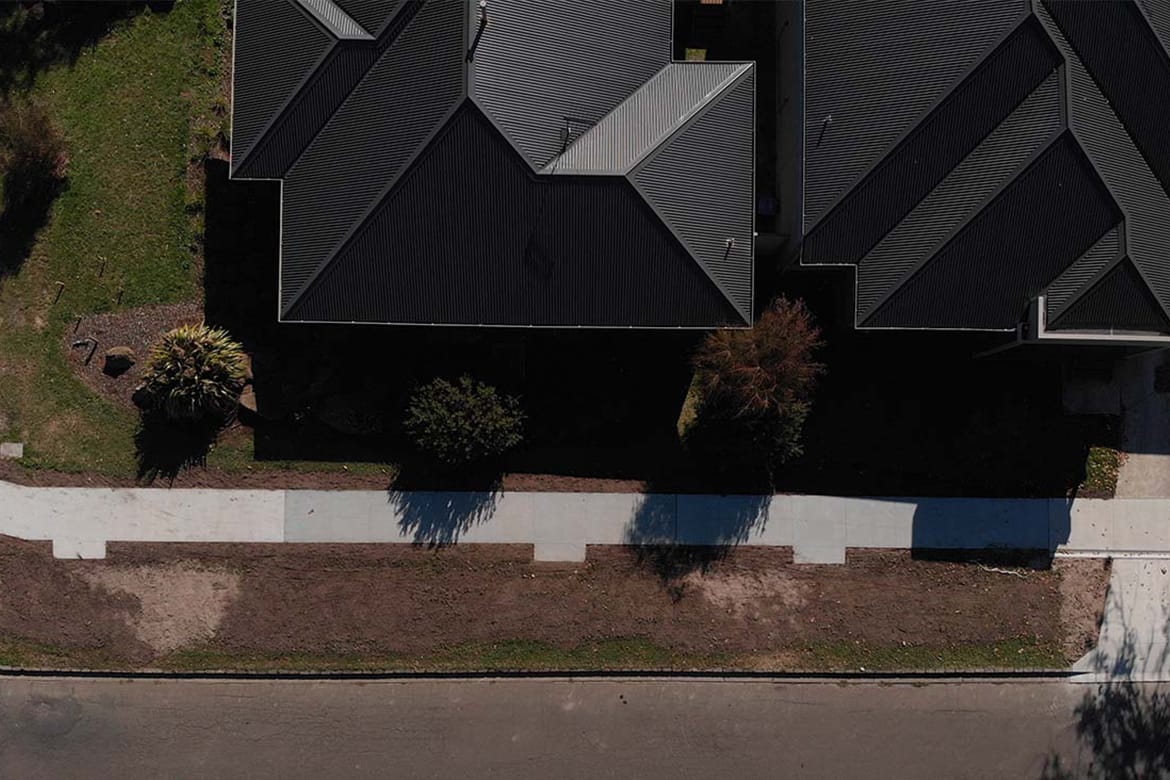It’s summertime, and the only concrete I want to be around right now is of the delicious frozen custard variety. Certainly not the grey stuff the heat sits on, making any time spent outside even more unbearable somehow. Nonetheless the news cycle abides no such seasonality. And so today, we are taking a look at the world’s first footpath made of coffee concrete.
We first reported on coffee concrete last August, when researchers from the Royal Melbourne Institute of Technology (RMIT) created a new form of concrete made partially from used coffee grounds. They found that the product was more eco-friendly than traditional concrete—turning what would normally be a waste product into construction material—but that it was also stronger, by around 30%. Now, those same researchers are putting the coffee concrete into action, with a new footpath in the Australian town of Gisborne.
Working with the Macedon Ranges Shire Council, the new walkway operates as a bit of a proof of concept. The concrete path consists of three sections: a stretch of traditional concrete made with sand that operates as the control group, a section made with wood chips biochar, and a third made with coffee biochar, a product made by heating spent coffee grounds to 350°C (662°F) in an oxygen-deprived environment.
The footpath being laid. Via Macedon Ranges Shire Council
Folks are now free to walk on the footpath, and RMIT researchers will be coming back regularly to see how the three different concretes hold up. If successful, the biochar-based concretes could then go on to see wider adoption around Australia. Already RMIT is partnering with civil infrastructure, asphalt paving, and road profiling company BildGroup for upcoming projects around the state of Victoria that will use the coffee concrete.
In Australia alone, an estimated 75 million kilograms (165 million pounds) of coffee grounds are used every year, most of it ending up in a landfill. Due to its higher density, that amount could replace up to 655 million kilograms (1.4 billion pounds) of sand, a depleting resource, used to make concrete. If adopted globally, the round 10 billion kgs of yearly coffee grounds created could replace 90 billion kilograms of sand. Almost 200 billion pounds. Every year.
Coffee: it tastes better than sand and it’s a stronger building material.
Zac Cadwalader is the managing editor at Sprudge Media Network and a staff writer based in Dallas. Read more Zac Cadwalader on Sprudge.
All photos via Macedon Ranges Shire Council
<?php echo adrotate_group(54); ??><?php echo adrotate_ad(589); ??><?php echo adrotate_group(56); ??><?php echo adrotate_ad(589); ??><?php echo adrotate_group(69); ??><?php echo adrotate_ad(589); ??><?php echo adrotate_group(38); ??><?php echo adrotate_ad(589); ??><?php echo adrotate_group(51); ??><?php echo adrotate_ad(589); ??>
Zac Cadwalader
July 11, 2024


